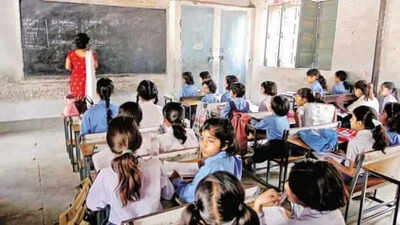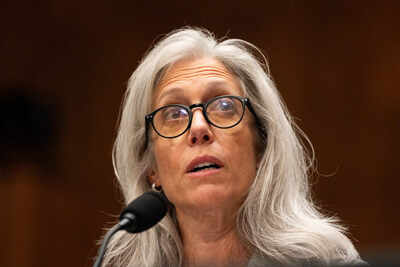India’s school teachers surpass one crore for the first time: Is it enough to bridge learning gaps?

We have often imagined Indian classrooms bustling with forty children and just one teacher. In contrast, research shows students thrive in smaller classes, with attentive teachers and functional labs. These opposing realities capture the paradox of India’s education system today. For the first time, the country has crossed a historic milestone: over one crore school teachers in the academic year 2024–25, according to the Unified District Information System for Education (UDISE) Plus. On paper, this is a feat worth applauding. The numbers suggest progress—better pupil-teacher ratios, higher retention, and a potential narrowing of regional disparities.Yet the reality is far more complex. Can a surge in teacher numbers truly bridge decades of entrenched inequities? Can it erase persistent learning deficits and address the glaring under-representation of women in leadership roles, despite their dominance in the teaching workforce? The UNESCO Global Education Monitoring (GEM) Report 2024–25 cautions that high enrollment alone does not ensure meaningful learning or inclusive leadership. Crossing the one crore mark, therefore, is not merely a milestone—it is a stark litmus test of whether India can transform numerical growth into genuine educational equity, classroom by classroom, child by child.
Teacher strength and pupil-teacher ratios: A step forward
UDISE Plus reports a 6.7% rise in teacher numbers compared to 2022–23. Pupil-Teacher Ratios (PTR) have improved across levels—10 at foundational, 13 at preparatory, 17 at middle, and 21 at secondary—well below the NEP 2020’s 1:30 benchmark. These improvements allow for more individualized attention, stronger teacher-student interaction, and enhanced learning opportunities, particularly in classrooms that were historically overcrowded. Yet, experts caution that numbers alone cannot compensate for infrastructure gaps, uneven training, or regional disparities.
Learning outcomes: Enrollment ≠ achievement
Despite high enrollment, foundational learning outcomes remain concerning. Data from ASER 2023 and UDISE+ 2023–24 show that fewer than half of Class V students can read a Class II-level text or perform basic division. Access to technology and trained teachers varies widely: Only 78% of schools have functional computer labs, and just 65% of teachers are trained in digital pedagogy. These deficits are most acute in rural and under-resourced areas, where learning remains uneven and inequities persist.
Gender in leadership: The missing link
UDISE+ 2023-24 reports suggest that women make up a majority of teachers, 62.4% at the primary level, but their representation drops sharply in leadership roles. Only 42.1% of secondary school principals and 28.6% of higher secondary principals are women; in higher education, 45.8% of faculty hold positions, but just 31.2% occupy leadership roles. The GEM Report emphasizes that gender-diverse leadership improves learning environments and outcomes, making this under-representation a critical concern for India’s education system.
Regional disparities: Lessons from the states
Performance varies sharply across states. Southern states like Tamil Nadu and Karnataka outperform northern counterparts in both learning outcomes and leadership representation, benefiting from better infrastructure and progressive policies. In contrast, Bihar and Uttar Pradesh lag, highlighting the influence of resource constraints, systemic inefficiencies, and socio-cultural barriers.
Policy, implementation, and gaps
The NEP 2020 emphasizes foundational literacy, numeracy, and teacher development through programs like NIPUN Bharat. Gender equity initiatives, including Beti Bachao Beti Padhao and Samagra Shiksha Abhiyan, focus primarily on enrollment rather than leadership. Uneven implementation, limited training for teachers, and insufficient mechanisms to advance women into leadership positions remain key obstacles.
Turning milestones into meaningful change
Crossing one crore teachers is a historic benchmark, but it is not an endpoint. To translate numerical growth into genuine educational equity, India must:
- Strengthen foundational learning: Full rollout of NIPUN Bharat with robust teacher training and digital infrastructure, especially in lagging states.
- Promote women in leadership: Structured mentorship and training programs for female educators integrated into national schemes.
- Leverage data: Use UDISE+ and AISHE to inform policy and monitor outcomes, ensuring interventions are targeted and evidence-based.
- Tailor state-specific strategies: Learn from high-performing states and customize interventions to local realities.
- Invest strategically: Partner with NGOs and private institutions to address infrastructure and leadership gaps.





